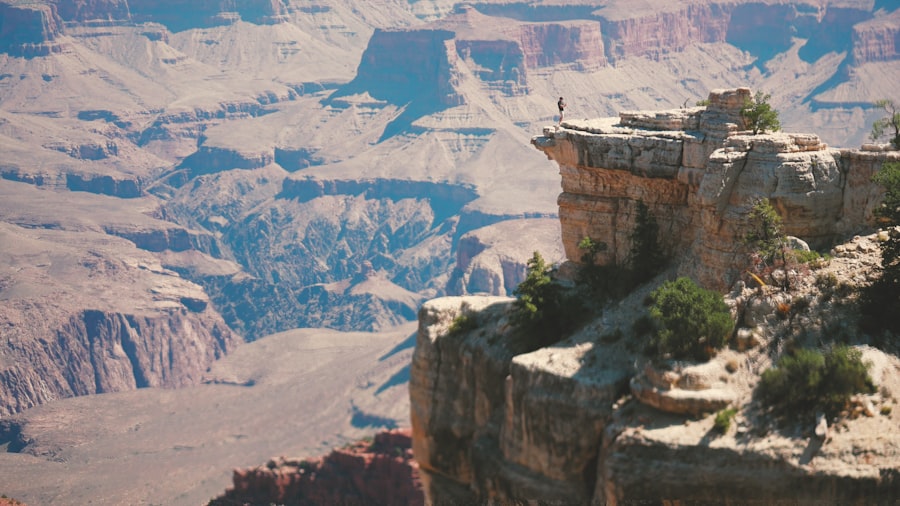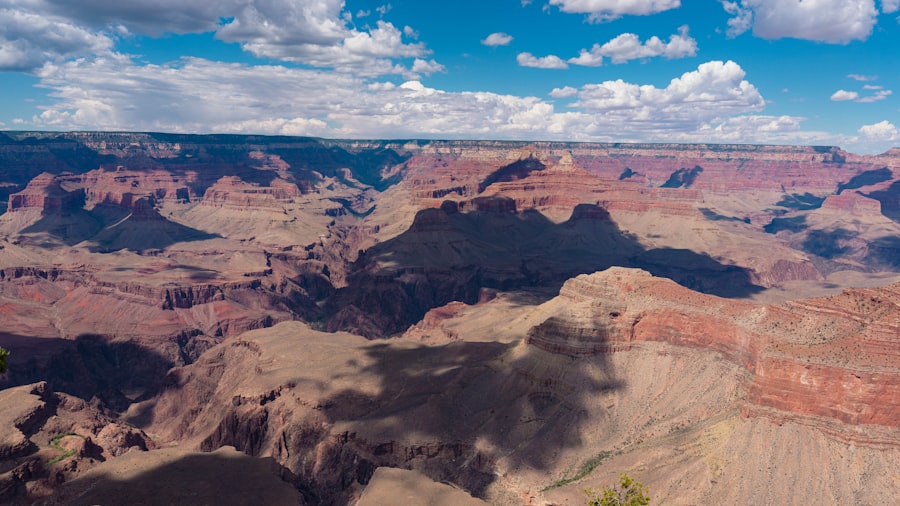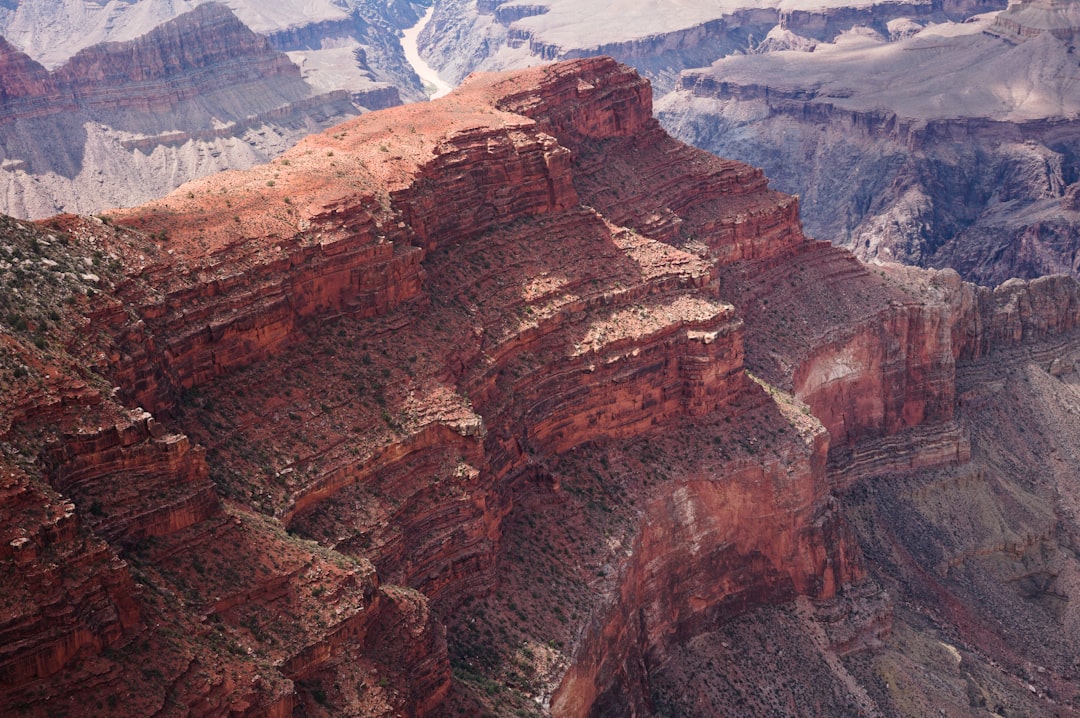The Grand Canyon, a breathtaking natural wonder carved by the Colorado River over millions of years, has long been a source of fascination and inspiration. However, alongside its geological marvels and stunning vistas, the canyon has also been the backdrop for a peculiar historical hoax that has captured the imagination of many. This hoax, which intertwines myth with reality, has led to a series of misconceptions about the canyon’s history and its significance.
As visitors flock to this iconic site, they often find themselves entangled in a web of stories that blur the lines between fact and fiction. Understanding the origins and implications of this hoax is essential for appreciating the true narrative of the Grand Canyon. The Grand Canyon historical hoax serves as a reminder of how easily misinformation can spread and take root in popular culture.
It highlights the importance of critical thinking and skepticism when confronted with extraordinary claims. As the tale of the hoax unfolds, it becomes evident that the allure of sensational stories can sometimes overshadow the rich and authentic history that lies beneath. By delving into the origins, spread, and eventual debunking of this hoax, one can gain insight into the broader implications of historical narratives and the need for vigilance in preserving truth.
Key Takeaways
- The Grand Canyon Historical Hoax is a fascinating example of how misinformation can shape historical narratives.
- The hoax originated from a misinterpretation of a historical document and grew into a widely believed legend over time.
- Debunking the hoax required thorough fact-checking and historical research to uncover the truth.
- Misinformation played a significant role in perpetuating the hoax and shaping the public’s perception of the Grand Canyon’s history.
- The impact of the hoax on Grand Canyon tourism highlights the importance of preserving the authenticity of historical sites and narratives.
The Origins of the Hoax: How It Started
The origins of the Grand Canyon historical hoax can be traced back to a combination of factors, including early exploration narratives, sensational journalism, and a public eager for adventure. In the late 19th century, as explorers began to document their journeys through the canyon, tales of hidden treasures and ancient civilizations began to emerge. These stories were often embellished or exaggerated, fueled by a desire to captivate audiences back home.
The allure of undiscovered riches and lost cultures created fertile ground for myths to take root. One particularly influential figure in this narrative was John Wesley Powell, an explorer who led an expedition down the Colorado River in 1869. Powell’s accounts of the canyon were filled with wonder and awe, but they also sparked imaginations about what lay hidden within its depths.
As newspapers reported on his findings, they often sensationalized his discoveries, leading to a proliferation of stories about lost cities and ancient artifacts. This initial wave of intrigue set the stage for the hoax to flourish, as subsequent storytellers built upon these early narratives, weaving together threads of truth and fiction.
The Spread of the Hoax: From Rumor to Legend

As word spread about the supposed secrets of the Grand Canyon, the hoax began to take on a life of its own. What started as whispers among explorers and journalists soon transformed into a full-fledged legend that captivated the public’s imagination. The tales of hidden treasures and ancient civilizations were disseminated through various channels, including books, articles, and even lectures.
The combination of adventure and mystery made these stories irresistible to those seeking excitement in an era marked by exploration and discovery. The rise of tourism in the early 20th century further fueled the spread of the hoax. As more people traveled to witness the grandeur of the Grand Canyon firsthand, they were often met with guides who regaled them with tales of lost cities and hidden artifacts.
These narratives became part of the tourist experience, blurring the lines between fact and fiction for many visitors. The hoax evolved from mere rumor into an accepted part of the canyon’s lore, with people eager to believe in its fantastical elements rather than question their validity.
Uncovering the Truth: Debunking the Hoax
| Hoax | Debunked |
|---|---|
| Alien sighting | Explained as a weather balloon |
| Bigfoot sighting | Footprints found to be a hoax |
| UFO crash | Identified as a military aircraft |
As time passed, scholars and historians began to take a closer look at the claims surrounding the Grand Canyon hoax. Through rigorous research and archaeological investigation, they sought to separate fact from fiction. The process of debunking these myths was not without its challenges; entrenched beliefs often proved difficult to dislodge.
However, as evidence mounted against the existence of lost civilizations or hidden treasures within the canyon, a clearer picture began to emerge. One significant turning point in debunking the hoax came with advancements in archaeological methods. Researchers employed techniques such as carbon dating and stratigraphic analysis to study artifacts found in and around the canyon.
These scientific approaches revealed that many claims about ancient civilizations were unfounded or exaggerated. The findings underscored that while indigenous peoples had indeed inhabited the region for thousands of years, their cultures were distinct from the mythical narratives that had taken hold in popular imagination.
The Role of Misinformation in the Hoax
Misinformation played a crucial role in perpetuating the Grand Canyon historical hoax. In an age before widespread access to information, sensational stories could easily gain traction without rigorous fact-checking or scrutiny. The allure of adventure often overshadowed critical thinking, allowing myths to flourish unchecked.
This phenomenon was exacerbated by a media landscape eager to capture public interest through sensationalism rather than accuracy. The consequences of misinformation extend beyond mere storytelling; they can shape perceptions and influence cultural narratives for generations. In the case of the Grand Canyon, the hoax not only distorted historical understanding but also affected how visitors engaged with this natural wonder.
The intertwining of myth with reality created a complex tapestry that obscured authentic experiences and connections to the land’s true history.
The Impact of the Hoax on Grand Canyon Tourism

The Grand Canyon historical hoax had significant implications for tourism in the region. As myths surrounding lost treasures and ancient civilizations proliferated, they attracted visitors seeking adventure and intrigue. Tour operators capitalized on these stories, offering guided tours that included tales of hidden riches and mysterious artifacts.
This commercialization of myth contributed to a booming tourism industry that thrived on sensational narratives. However, as researchers began to debunk these myths, there was a growing awareness among some tourists about the importance of understanding the canyon’s true history. Many visitors expressed a desire for authentic experiences that honored indigenous cultures and acknowledged their deep connections to the land.
This shift in perspective prompted some tour operators to reevaluate their offerings, focusing on educational experiences that highlighted factual history rather than sensationalized tales.
Lessons Learned: How to Identify and Combat Historical Hoaxes
The Grand Canyon historical hoax serves as a cautionary tale about the importance of critical thinking when engaging with historical narratives. One key lesson is that extraordinary claims require extraordinary evidence; individuals should approach sensational stories with skepticism and seek out reliable sources before accepting them as truth. This principle is especially relevant in an age where misinformation can spread rapidly through social media and other platforms.
Additionally, fostering a culture of inquiry is essential for combating historical hoaxes. Encouraging curiosity and promoting research skills can empower individuals to question narratives they encounter. Educational institutions play a vital role in equipping students with tools for critical analysis, enabling them to discern fact from fiction in historical accounts.
By instilling these values early on, society can cultivate a more informed citizenry capable of navigating complex narratives.
The Importance of Fact-Checking in Historical Narratives
Fact-checking is an indispensable component of preserving historical accuracy and integrity. In an era where information is readily available yet often unverified, rigorous fact-checking practices are essential for ensuring that narratives remain grounded in reality. The Grand Canyon hoax exemplifies how unchecked claims can distort public understanding; therefore, it is crucial for historians, journalists, and educators to prioritize accuracy in their work.
Moreover, collaborative efforts among scholars can enhance fact-checking initiatives by pooling resources and expertise. By creating networks dedicated to verifying historical claims, researchers can collectively address misinformation and promote accurate representations of history. This collaborative approach not only strengthens individual narratives but also fosters a culture of accountability within academic circles.
Revisiting the Grand Canyon’s True History
Revisiting the true history of the Grand Canyon involves acknowledging both its geological significance and its cultural heritage.
Understanding their histories provides valuable context for appreciating the canyon’s significance beyond mere aesthetics.
In recent years, there has been a concerted effort to amplify indigenous voices and perspectives within discussions about the Grand Canyon’s history. Collaborative projects between indigenous communities and researchers aim to preserve traditional knowledge while educating visitors about cultural practices tied to this iconic landscape. By honoring these histories, society can move toward a more inclusive understanding that respects both natural wonders and human experiences.
The Power of Myth and Legend in Shaping Historical Narratives
Myth and legend hold immense power in shaping historical narratives; they can inspire awe while simultaneously distorting reality. The Grand Canyon hoax illustrates how captivating stories can overshadow authentic histories, leading people to embrace fantastical elements over factual accounts. While myths can serve as cultural touchstones or sources of inspiration, it is essential to recognize their limitations when constructing historical understanding.
While myths may offer valuable insights into cultural values or collective identities, they should not replace rigorous inquiry into actual events or experiences. Striking a balance between honoring mythological narratives while prioritizing factual accuracy is crucial for fostering a nuanced understanding of history.
Moving Forward: Preserving the Authenticity of Historical Sites
Preserving authenticity at historical sites like the Grand Canyon requires ongoing efforts to combat misinformation while promoting accurate representations of history. Engaging local communities in preservation initiatives can foster stewardship over cultural heritage while ensuring that diverse perspectives are included in narratives about these sites. Education plays a pivotal role in this endeavor; by equipping visitors with knowledge about both natural wonders and human histories tied to places like the Grand Canyon, society can cultivate deeper connections between people and landscapes.
Ultimately, preserving authenticity involves recognizing that history is not static but rather an evolving tapestry woven from diverse threads—each contributing uniquely to our understanding of who we are as individuals and as a collective society. In conclusion, understanding the Grand Canyon historical hoax reveals much about how narratives are constructed and disseminated over time. By examining its origins, spread, debunking efforts, and implications for tourism, one gains insight into broader themes surrounding misinformation and historical representation.
As society moves forward, embracing critical thinking alongside respect for authentic histories will be essential for preserving both natural wonders like the Grand Canyon and their rich cultural legacies.
In recent years, the Grand Canyon has been at the center of numerous conspiracy theories and historical hoaxes, captivating the imagination of many. One such intriguing discussion can be found in an article on X File Findings, where the author delves into the myths and legends surrounding the Grand Canyon, exploring claims of ancient civilizations and hidden treasures. This article provides a comprehensive overview of the various narratives that have emerged over time, offering readers a chance to separate fact from fiction in the ongoing debate about the canyon’s mysterious past.
WATCH THIS! 👺 The Grand Canyon Cover-Up: Did the Smithsonian Hide Evidence of Giants?
FAQs
What is the Grand Canyon historical hoax?
The Grand Canyon historical hoax refers to a widely circulated story claiming that the Smithsonian Institution covered up the discovery of ancient Egyptian artifacts in the Grand Canyon. The story alleges that a mysterious cave filled with artifacts and mummies was found in the early 20th century, but the Smithsonian suppressed the findings to avoid rewriting history.
Is there any truth to the Grand Canyon historical hoax?
No, there is no truth to the Grand Canyon historical hoax. The story is a complete fabrication and has been debunked by historians and archaeologists. There is no evidence to support the existence of an Egyptian cave or the suppression of any such discovery by the Smithsonian Institution.
Why was the Grand Canyon historical hoax created?
The Grand Canyon historical hoax was likely created to generate interest and intrigue about the Grand Canyon and to attract attention to the alleged discovery of ancient Egyptian artifacts. It may have also been intended to discredit established institutions like the Smithsonian and promote conspiracy theories.
How can I distinguish between fact and fiction regarding the Grand Canyon historical hoax?
To distinguish between fact and fiction regarding the Grand Canyon historical hoax, it is important to rely on credible sources such as reputable historians, archaeologists, and scientific institutions. Additionally, critical thinking and skepticism can help in evaluating the validity of extraordinary claims.
